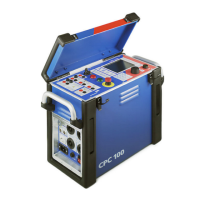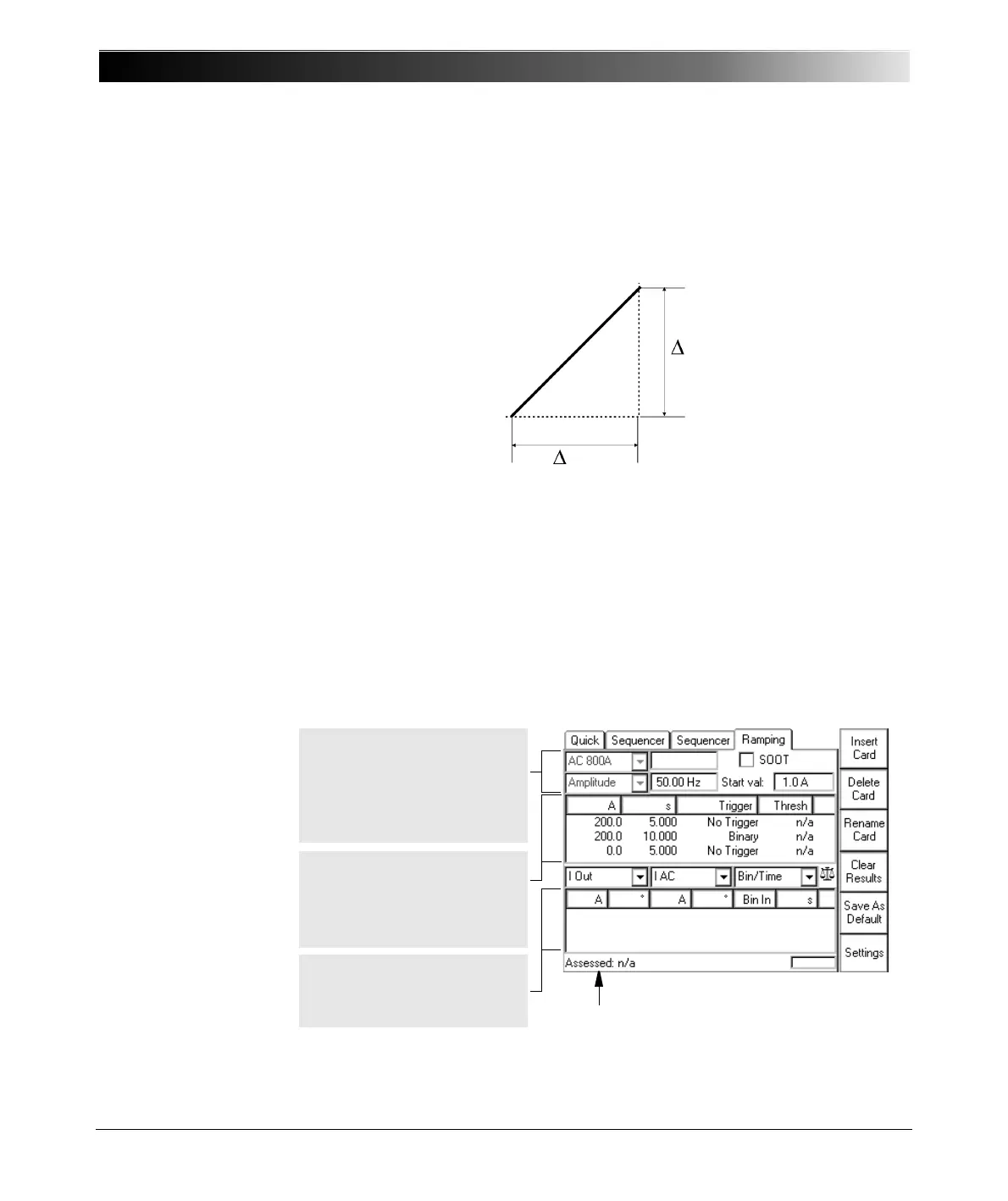CPC 100 V1.41
8 - 18
Ramping
Use the Ramping test card to define a series of ramps to be applied to a
connected test object.
Figure 13:
A typical ramp
characteristic: Δ q / Δt,
a linear change of either
amplitude or frequency
of one specified output
signal within a defined
period of time.
A series of up to 5 ramps can be defined. The ramps within that series execute
sequentially, and run from a start to an end value within a set period of time.
It is possible to specify a trigger signal that prematurely terminates either
• the entire series of ramps
• or the actual ramp only, and then continues with the next one (if any).
The test object’s characteristic is measured, and the values are displayed in the
measurement table.
The Ramping test card can be subdivided into three sections:
Figure 14:
Ramping test card
q (output quantity)
t
A ramp represents a
linear change of either
amplitude or frequency
of one specified output
signal whereas the
other quantity remains
fixed.
To learn more about test assessment, refer to
”Test Assessment” on page 10-2.
Ramps table (ramp-specific settings)
– output quantity settings
– duration of ramp
– trigger specification
Measurement table
– definition of displayed quantities
– display of the measured values
Series settings (apply to all ramps)
– Range selection & display
– Ramp & fixed quantity
– SOOT (switch off on trigger)
– Start value (of first ramp)

